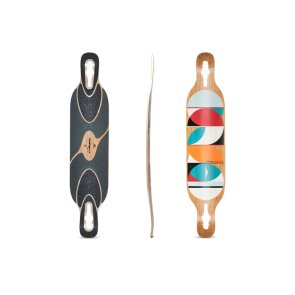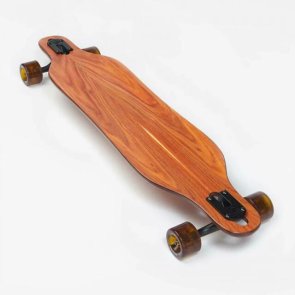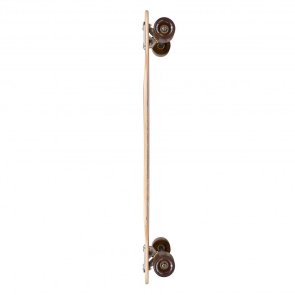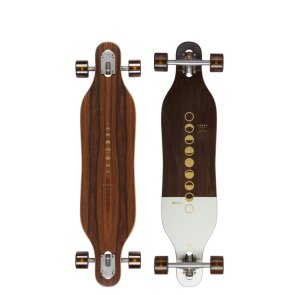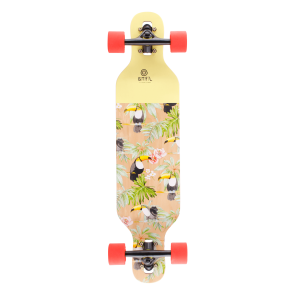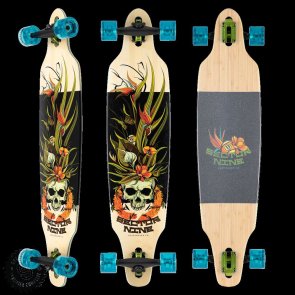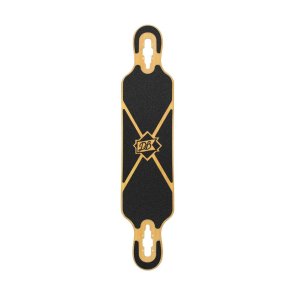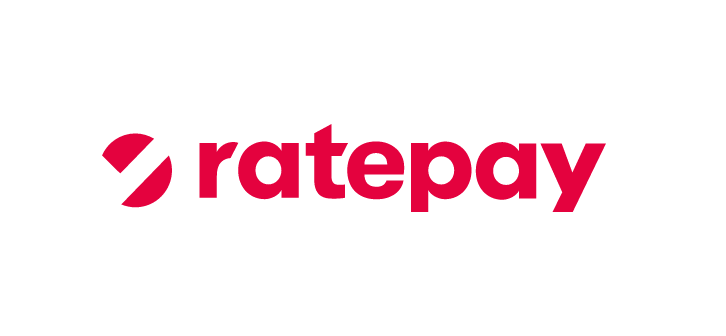Completely mounted by us. ready to roll out of the box.
Components:
- 180mm 50° Paris Trucks
- Orangatang In Heat 75mm 80a Orange
- DropTrough Hardware
- DropTrough Shockpads
- Sunrise Abec 7 V2 Bearings
- High Precision Spacer made in Germany
Please choose Flex:
- Flex 1: 170-250+ lbs / 75-114+ kg
- Flex 2: 100-185+ lbs / 45-84+ kg
- Flex 3: 75-150+ lbs / 35-68+ kg
Specs
- Length: 42.8" / 109 cm
- Width: 9" / 22.9 cm
- Wheelbase: 31.5" / 80 cm
- Weight (deck): 3.03.6 lbs / 1.4-1.6 kg
- Weight (complete): 7.07.6 lbs / 3.2-3.4 kg
Flex
The Dervish Sama gave us an opportunity to reexamine our current flex options. We found that even on the softest flex Dervish (flex 2), it was difficult for riders weighing less than 140 lbs to generate enough force to fully engage the deck's flex during normal riding.
The introduction of a third, even softer flex allows lighter riders to more easily “play" with the cambered standing platform as they pump and carve, achieving a much more lively and comfortable riding experience.
Flex 1: 170-250+ lbs / 75-114+ kg
Flex 2: 100-185+ lbs / 45-84+ kg
Flex 3: 75-150+ lbs / 35-68+ kg
A softer flex rating will give you more control and tighter turns at slower speeds and make it easier to slide, but tends to lose stability at higher speeds. A stiffer flex provides more energy potential, is more stable at higher speeds, and holds up better to hard landings, but will not be as forgiving and lively when cruising.
Width
We explored many different width and shape options while prototyping the Dervish Sama. We came to the realization that there is no “right" answer and that there's an inherent tension between stability and liveliness. Using sophisticated (for us) design software and curvature calculations, we extensively tested various different widths and subtle changes to the deck shape. We then collectively decided that this new 9" wide shape (the old Dervish was 8.5" with a different neck curvature) provided a satisfactory balance of comfort, edge control, and responsiveness.
Concave
The Dervish Sama also received a more pronounced concave profile, which is further augmented by the increased deck width. The result is improved edge feel for turn initiation and extra control while sliding.
Camber
The Dervish Sama's versatility lends it to many disciplines, but at its heart lies a deeply rooted passion for carving. The cambered platform and weight-tailored flex pattern work together synergistically to provide a lively, flowing ride. Press your weight into a turn to preload the deck's curvature; unweight as you finish the carve and feel the board snap back with positive energy return.
Construction
A vertically laminated bamboo core is sandwiched between layers of triaxial fiberglass and a bamboo bottom veneer. The deck is pressed with concave and cambered curvatures to create a lively, responsive ride with high energy return.
Localized fiberglass reinforcement at the nose and tail kicks (spanning neck to tip) ensures strength under hard riding.
Nose & Tail Kicks
To keep up with the current caliber of freestyle riding, we gave the Dervish the most tasteful of nosejobs. After testing several new shapes and sizes, we lengthened the tips for additional leverage, widened the neck to increase durability and ensure a consistent flex pattern through the entire deck, and added subtle kicks to increase pop and to lock your feet in. The kicks are reinforced with an extra layer of fiberglass for added stiffness and durability.
Griptape
A six-piece symmetrical griptape pattern was designed with performance and elegance in mind. The two sections at the kicks use an aggressive, rougher-grit grip to provide enhanced control and security for manuals and freestyle tricks. The four middle sections use a milder, finer-grit grip (comparable to street skate grip) to facilitate dancing and footwork maneuvers. The segmented design yields functional coverage without interfering with the board's flex pattern.
Setups
We recommend 180mm or 10" trucks (Paris, Bear, Gullwing Charger, Navigator, etc.) for the Dervish Sama.
This board is designed to accommodate 75mm wheels without wheelbite. A wider race style wheel is ideal for maintaining roll speed and traction through hard carves, while a 70-75mm freeride wheel will provide a well rounded balance of grip and drift for a more slide-friendly riding style.
Riders leaning towards freestyle and aggressive freeriding may prefer a lighter and/or smaller wheel in the 70mm+ range.
Inspiration
We launched the original Dervish in June of 2007. In 2006 we had shifted our entire line to bamboo, which opened the doors for us to create a flexy drop-through board. All previous drop-throughs we'd built as protos had eventually fractured due to stress on the oak cores.
We've made subtle changes to the Dervish since then (cutout and keyhole modifications and graphics), but it's now time to change it up in a more significant fashion. We've learned a lot about compound contouring in the last few years (as seen on the Tan Tien) and felt it was time to step up and rethink the Dervish.
Name & Graphic
Sama is the Sufi ceremony focusing on active meditation as a tool for the individual's spiritual journey. The origin of this practice is credited to Rumi, a poet and founder of the Mevlevi order of whirling dervishes. Through Sama, the individual aims to ascend from the confines of thought to attain heightened maturity, perfection, and closeness to God.
For this board's graphic we continue to explore the whirling dervish theme, although this time in a more abstract form. The artwork was created by Diana Gracida of Nana Studios.
Design Process and Overview
The Dervish Sama emerged out of streamlined communication amongst the design team and comparing various digital and analog techniques used throughout the process.
Our design team faced a unique challenge: the Dervish is a board that we continue to enjoy riding and encourage others to share in this experience, so how do we enhance the features of the original board and at the same time increase its versatility? After brainstorming flex patterns, durability, construction and most importantly performance, we arrived at a multifaceted goal: to enhance edge control, lively response and carving; to increase trick potential (with the added benefit of durability), to increase concave with subtle adjustments to the camber, and to make the board more accessible by expanding our flex ranges. The Dervish Sama, through intensive back-and-forth within digital environments and physical prototyping, serves up a platter of carving and freeride goodness.
We're stoked on the continuing refinement of our design processes and how what we've learned from the development of the Dervish Sama in particular (regarding methods of communication, prototyping, and testing procedures) will impact our ability to continue exploring the boundaries of skateboard design. More importantly, we're stoked on this board and excited to share it with all those who are gonna enjoy it.
The Loaded Crew
- "Couleur": nature
- "Flexboard": Flex
- "Truck Mount": Dropthrough
- "Longueur": 42.8"



